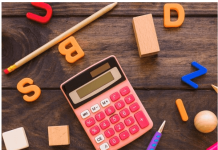Science education plays a vital role in shaping the critical thinking abilities of students. However, simply memorising facts is not enough, and many students benefit from additional material, such as experiments or science incursions. These additional details help to empower students and build their skills as scientific thinkers. In this article we’re going to explore core science skills in more detail and find out how teachers can support their students in the classroom.
What Are Core Science Skills?
The newest version of the Australian School Curriculum provides in-depth guidance on eight core “Science Inquiry Skills.” These skills represent core learning markers that teachers can use to monitor students’ performance. The Curriculum outlines eight core science skills:
- Observation – This includes teaching students to observe the world around them using each of their five senses.
- Classification – Once students have mastered observation, they can move onto classification. This could be something simple, like classifying bugs based on the number of legs, or it could be as complex as researching the exact species of plants around campus.
- Measurement – Taking measurements is a fundamental science skill that needs to be developed from an early age. While students will learn how to use equipment like rulers and protractors during other classes, these instruments should appear during science classes too.
- Prediction – The first major step in science classes is asking students to predict the outcome of certain experiments. The ability to predict an outcome demonstrates observation and measurement skills, and it teaches students to connect the dots between action and reaction.
- Variables – Tracking and controlling variables during an experiment is an advanced concept, but it’s critical for pushing scientific understanding to the next level.
- Interpretation – While it may be easy for students to record the outcomes of an experiment, interpreting the results is another matter. Teaching students to interpret results is commonly done by encouraging them to look for patterns and trends.
- Communication – Communicating the results of an experiment allows students to build a core science skill, but it can also enhance their own understanding of the material. Presenting and verbalising findings builds further neural connections and helps students absorb the lesson.
- Drawing conclusions – The final science skill is drawing conclusions from results. Once students understand how to interpret an experiment, they need to be able to use logic and reasoning to explain their findings.
How to Build Core Science Skills
In an ideal world, the 8 core science skills would be built into every lesson. While that’s not always possible, there are a few things you can do to help your students develop their critical thinking abilities:
- Teaching the scientific method – The best way to build core science skills is to teach students the scientific method. The scientific method is a series of steps that promote critical thinking and meticulous testing. This process encourages students to form their own ideas, but also to rely on supporting evidence before making a decision. Each of the core science skills is represented throughout the scientific process, so your students will gain exposure each time you conduct an experiment.
- Hands-on experiments – Not every student is capable of absorbing information through formal lectures. While that works for some, most students need additional stimuli to gain full understanding of a topic. One of the simplest ways to boost their understanding is to introduce hands-on experiments.
Involving students in classroom experiments gives them a chance to get hands-on with the material. That’s a lot of fun for students of all ages, but research also shows us that hands-on work helps to build stronger neural pathways when learning something new. The result is that students grasp advanced concepts much faster, and their retention is much higher than it would be after a lecture.
- Structuring lessons around particular skills – Designing a balanced curriculum is always a challenge. When it comes to core science skills, it’s often helpful to plan lessons in such a way that each one focuses on one or two skills at a time. This allows you to narrow the focus of each lesson or experiment, and it improves the way the material is delivered. As students get older each lesson can contain more elements, but especially for young students, focused lessons provide better outcomes.
The Importance of Building Core Skills
While science skills are critical for ensuring students’ success in science classes, they’re also useful beyond the classroom. The skills taught during a science incursion are an extended problem solving method. That means they have an impact on classroom results, but students will also see the benefits throughout their schooling, career and life.
Australia’s core science skills are a blueprint for assessing and solving problems, both in and out of the classroom. This benefits students by:
- Improving general critical thinking skills
- Building their confidence in completing school work
- Building their understanding about the world
- Improving comprehension of other schooling materials
- Preparing them for careers in STEM fields
The right lessons at an early age can make a lasting impact on students. And, with technological advances creating more STEM opportunities than ever, the skills students learn at a young age could prove highly valuable in 10 or 20 years’ time.








